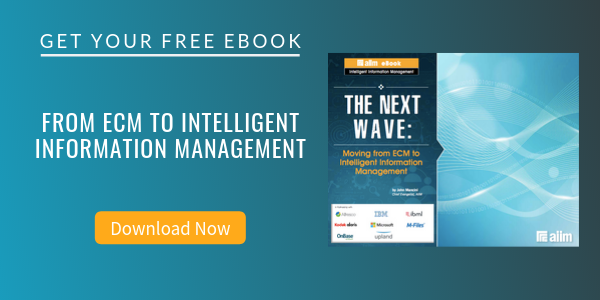
5 Myths about ROT – Redundant, Obsolete, and Trivial Files
Enterprise Content Management (ECM)
Industry analysts quote the growth of unstructured content at around 40% a year. A big contributor to content growth is Redundant, Obsolete and Trivial (ROT) files. Still, there are many misconceptions about the concept of ROT.
Myth #1: There is no Content ROT in my organization -- My organization has policies and procedures in place to make sure that there is no ROT in my file servers, collaboration systems or in my ECM system.
Reality: ROT is everywhere. End users control what is put into storage, and they are impossible to control.
First, they are information hoarders. When a user finds a document they like, they save a copy to their “O:” drive. Even worse, they do not feel empowered to delete anything, anytime. They even save archives, backup files, and the like. Worst still, they feel that the “O:” drive is the place for their iTunes library and worse personal data.
ROT is created every day and just compounds as new documents are created. The fact is that 1/3 of all of the content in an unmanaged server is ROT. It can be as much as 70% ROT!
Myth #2: Content ROT isn’t hurting my organization. ROT doesn’t really hurt my organization. We have been in business for years, and this has never been a problem.
Reality: ROT hurts you every day. ROT makes it hard to find the really important documents in your organization. ROT makes it easy to misplace sensitive data that you don’t want to be found. ROT places unnecessary risks in your organization that will result in loss of productivity, reputation, and increased exposure to litigation. It gums up search engines and their indexes. When people leave the organization, their ROT is left behind and gets in the way of others. ROT huts you in just so many ways.
Myth #3: Content ROT isn’t costing my organization anything, so why worry? Disks are cheap nowadays, so why care?
Reality: The total cost of ownership for storage is way more than you think. High-speed reliable disk itself is about 5X more expensive than the hard drive in your laptop. It sits in servers that have to be managed, backed up, cooled, and the like. Most organizations charge back a Terabyte of content at a cost of between $20,000 - $30,000 a year. An average iTunes library will run $1500/year. If that storage is in SharePoint or an ECM system, multiply that cost x3! A lot more than that 500GB drive at BestBuy.
Myth #4: I have specialized hardware that deals with ROT. My Storage Area Network (SAN) detects duplicates. Isn’t that enough?
Reality: While it is true that specialized hardware can effectively manage some of the storage problems related to ROT, then only handle part of the problem, binary duplicates on the same server. It doesn’t handle near-duplicates, out of policy data, sensitive data, and trivial items. What’s more, it doesn’t reduce file count, so search the ROT is still seen by the users and indexed by search engines. There are a lot of great reasons to have high-end storage hardware, but eliminating ROT isn’t one of them.
Myth #5: ROT is hard to eliminate. Even if ROT is costing my organization, it is too hard to find and eliminate.
Reality: In the past, we have left it up to our end users to deal with ROT. They caused the problem in the first place, so they cannot be part of the solution. In the 90s we tried technology like enterprise search. Search is good at finding bits of ROT, but it isn’t fit for ROT hunting.
What is needed is involving People with a Process and specialized Technology to attack the ROT problem.
- Only People can make the kind of decisions necessary to remove content for a system
- Only Technology can identify ROT and present it for processing
- Without a well-defined Process, it is impossible to take a systematic approach to eliminate ROT.
About John Mancini
John Mancini is the President of Content Results, LLC and the Past President of AIIM. He is a well-known author, speaker, and advisor on information management, digital transformation and intelligent automation. John is a frequent keynote speaker and author of more than 30 eBooks on a variety of topics. He can be found on Twitter, LinkedIn and Facebook as jmancini77. Recent keynote topics include: The Stairway to Digital Transformation Navigating Disruptive Waters — 4 Things You Need to Know to Build Your Digital Transformation Strategy Getting Ahead of the Digital Transformation Curve Viewing Information Management Through a New Lens Digital Disruption: 6 Strategies to Avoid Being “Blockbustered” Specialties: Keynote speaker and writer on AI, RPA, intelligent Information Management, Intelligent Automation and Digital Transformation. Consensus-building with Boards to create strategic focus, action, and accountability. Extensive public speaking and public relations work Conversant and experienced in major technology issues and trends. Expert on inbound and content marketing, particularly in an association environment and on the Hubspot platform. John is a Phi Beta Kappa graduate of the College of William and Mary, and holds an M.A. in Public Policy from the Woodrow Wilson School at Princeton University.



